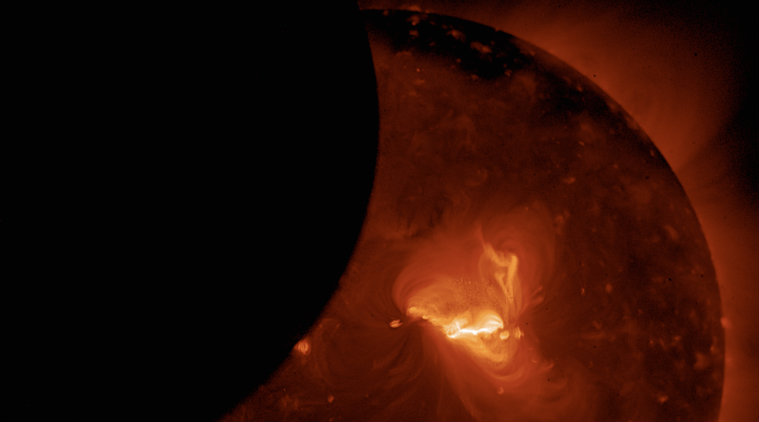 Partial solar eclipse on August 11: When the Moon covers the sun in an angular dimension it is known as a partial Solar Eclipse. (Image: NASA)
Partial solar eclipse on August 11: When the Moon covers the sun in an angular dimension it is known as a partial Solar Eclipse. (Image: NASA)
A partial solar eclipse will take place on August 11, lasting for nearly 3 hours 30 minutes. The partial solar eclipse will be visible in the day starting at around 1:32 PM Indian Standard Time (IST), and will be visible till 5:02 PM IST. It will be visible across major parts of the Northern Hemisphere, though India will not get to see the event.
So what is partial solar eclipse? How is it different from a total solar eclipse?
An eclipse is a celestial phenomenon which takes place when the Sun, Moon, and Earth are aligned in a straight line. In a solar eclipse, it is in the Moon which blocks the Sun’s path and stops the sunlight from reaching the Earth. During a total solar eclipse, it turns dark during the day, and temperatures can fall, since the Sun is completely blocked by the Moon.
This is also the reason why a total solar eclipse has inspired so much superstition and fear, given that it turns dark during the day.
However, when the Moon covers the sun in an angular dimension it is known as a partial solar eclipse. During a partial solar eclipse, the Sun appears as a disk or in a crescent shape, the nature of which may differ according to the location on Earth and the alignment of the three bodies.
When will the next Partial Solar eclipse take place? Is it safe to watch?
As pointed out the partial solar eclipse is on August 11, and it will be visible from only a few locations on the Earth. NASA has created a Goddard Space Flight Centre (GSFC) map to showcase the path of this eclipse. According to the map, the eclipse will be at its greatest over the eastern reaches of Siberia and the North Pole observers will be able to view over 65 per cent of the eclipse.
People cannot watch the partial solar eclipse with their bare eyes. There are specific glasses available in the market which people can purchase to experience the natural phenomenon without damaging their eyes. The Partial solar eclipse requires the same precautions as a total solar eclipse. Pinhole cameras, special solar eclipse protection glasses are still recommended to avoid any damage to the eyes.